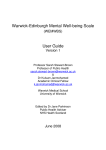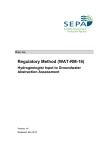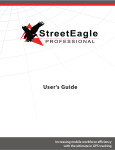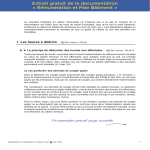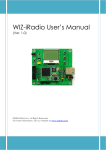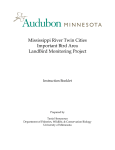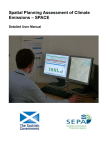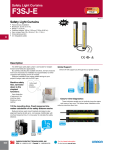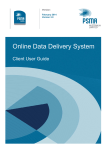Download Scotland's Environment Web User Guide
Transcript
Scotland’s Environment Web User Guide Adding resources to the homepage search V2 Page 1 Contents 1 Introduction 3 1.1 Background 3 1.2 Intended Users of this document 3 2 “Google-like” box and button search 4 2.1 Summary of Functionality 5 2.2 Definitions 6 3 Management of Partner Information Resources 7 3.1 Manually Identify the Relevant Resources 7 3.2 Identify the Information Resources 7 3.3 Communicating with all Content Management System users 8 3.3.1 Document Titles 8 3.4 Naming Conventions 9 4 Publishing the Information Resource 10 4.1 Technical Guidance 10 4.2 Alternative Method 10 5 Appendix 1 - Guidelines for Publishing Information Resources 11 5.1 Environmental Topic 11 5.2 Relevance 12 6 Appendix 2 – Guidelines for Naming Documents for Inclusion 14 6.1 Naming Conventions 14 6.1.1 Title 14 6.1.2 Author 15 6.1.3 Date 15 6.1.4 Keyword/Subject 15 7 Appendix 3 – Technical Description 16 7.1 Process Model 16 7.2 Example XML sitemap 17 Page 2 1. Introduction The following document will introduce and guide the various contributors to the Scotland’s Environment Web on how to publish environmental information ‘resources’ which can be found by using the website SEARCH functionality. 1.1 Background The Scotland’s Environment Web LIFE+ Project website, initiated in September 2011, aims to be the “trusted” gateway to everything users want to know about Scotland’s Environment, bringing together the most up-to-date environmental information and data into the one place, so that it is easy to find, view, analyse and interpret. The Scotland’s Environment Web project is a multi-agency innovative partnership that is moving to a web based, dynamic, digital approach to providing access to data and information held and managed by a wide range of organisations across Scotland. Scotland’s Environment Website has been developed to bring together information on Scotland’s environment from a multiple sources. It has been created to provide a reliable, coherent source of environmental information from authoritative sources in Scotland. It is intended to be the first place that anyone would choose to look for reliable and accurate information on Scotland’s environment from known and trusted sources. The purpose of this document is to specify the functionality that will enable all partners to contribute to information and data that users can search for and find on the website. 1.2 Intended Users of this document This document is intended to be used by Scotland’s Environment Web partner organisations with resources that could be exposed via the website SEARCH. This can include documents, interactive tools, blogs, press releases, videos, data sets, web pages, maps or other relevant media that has been published on the partner’s website. Appendix 1 of this document has guidelines to follow to identify relevant resources. It is intended to inform the partner web administrators, and any person involved in publishing information to their website, on the correct procedure to follow to ensure the resources to be published appear in the right place in the Scotland’s Environment Web SEARCH. The following functional areas will need to be involved in the initial set-up within the partner organisation as each of them will be required to do some work in order to set up the “publish to Scotland’s Environment Web” system. Page 3 1. Information / Knowledge Management To define a process by which ‘resources’ will be identified for inclusion. To define how the ‘resources’ are categorised. 2. Information Service / Web Development To set up a site map for all the relevant URL’s. 3. Communications or Other To inform all the content users about the process change. 2. “Google-like” box and button search In June 2014, the new design for Scotland’s Environment website was launched. This new design now includes a new Home Page SEARCH function that asks the User “What are you interested in?” in a Google-like box and button search. By using this option the User expects comprehensive search results that will contain resources that they are looking for. The search results that are returned will include pages from with Scotland’s Environment website as well as resources that have been identified on the partner’s websites. The website is categorised into areas that the User can engage with, and the search results are returned under these categories: Get Informed – resources that Users can read and digest to understand and get informed about the different aspects and interactions of Scotland’s environment and can include research, policies, strategies, guidance, briefings etc. Get Interactive – more data focused resources that Users can interactive with to get a more indepth understanding through visualisation, analysis and interpretation of data related to environmental issues. Get Involved – resources that Users can use themselves and encourage others to get involved in action to monitor, protect and improve the environment. Get Communicating - resources that Users can view to get up-to-date news and updates about Scotland’s environment, updates to the website and news from partner organisations. (see 2.2 below for more detail) The keyword(s) that the User enters into the homepage SEARCH will search all of the identified resources from partner’s websites as well as the content of Scotland’s Environment website. The SEARCH will only pick up resources that have been published on partner’s websites and which have been specifically flagged by an authorised person(s) for inclusion in the SEARCH results. The responsibility for the source and content remains with the partner organisation and ensures that the website users have access to an accredited, up-to-date tailored set of information resources providing context, background information and detail. Page 4 2.1 Summary of Functionality As each partner holds relevant information resources on their own website with a specific content management system, this document is a generic guide to the steps that need to be completed in order to ensure the resources are found by the search engine and thus by web users. The actual technical solution will be different for every organisation depending on how information resources are published on their website(s). However, there are a number of generic steps which will need to be fulfilled. Based on the suitability criteria provided (See Appendix 1), identify the resources already published on the partner websites (or at least held at a specific “URL”), which should be made available to the Scotland’s Environment website SEARCH. Decide which category the resource is most suitable published (see definitions in Section 2 above and Section 2.2 below – Get Informed, Get Interactive, Get Involved and Get Communicating). Ensure that the URL is unique for each information resource and ensure that the name describes its content and a full title and description where necessary. Liaise with your technical staff to identify a solution for the provision and updating of your information resources to be included in the Scotland’s Environment Web SEARCH. Prepare or update your governance arrangements to ensure the ongoing delivery of appropriate new resources, including updating and removal of existing resources as required. Page 5 2.2 Definitions Table 1 - Definitions Term Definition Resource For the purposes of this document, is an item that provides information and/or about the environment in Scotland. Category The resource must have a uniform resource locator (URL) that is accessible over the internet. A URL must be unique. Multiple resources can have a single URL (holding page). A resource can be in multiple formats. The resource will be treated differently depending upon the format of it. It is up to the publisher to ensure the integrity and layout of the resource presented in the URL. Includes documents, interactive tools, blogs, videos, web pages, maps or other relevant media. Categories are defined by what the User can do with the information. Ultimately all the information on the website is informing, but by presenting it this way, the User can choose their route. Get Informed - resources that Users can read and digest to understand and get informed about the different aspects and interactions of Scotland’s environment. In the first instance this is the textual content that resides under the State of the Environment report and the data found for the Trends and Indicators section. Resources relating to Get Informed can include research, policies, strategies, reports, guidance, briefings etc. Get Interactive - data focussed resources that Users can interactive with to get a more indepth understanding through visualisation, analysis and interpretation of data related to environmental issues. Mapping and viewing of spatial data Data visualisation and analysis Environmental games Any other interactive data modelling, analysis, viewing and interpretation tools, and applications. Page 6 Get Involved – resources that Users can use themselves and encourage others to get involved in action to monitor, protect and improve the environment. Links to community projects (Project Finder) Tools to support Case studies of best practice “How To” guidance and Learning tools Mobile Apps to collect data and find out more about the local environment Get Communicating – resources that Users can view to get up-to-date news and updates about Scotland’s environment, updates to the website, and news from partner organisations. Topical and relevant environmental news from third party websites News, announcements and updates from Partner organisations – including events Social media Sitemap A sitemap is a list of the URL resources on your site which are available for the search engine to include in the search Metadata Data that describes other data 3 3.1 Management of Partner Information Resources Manually Identify the Relevant Resources In order to select resources to be included in the Scotland’s Environment website SEARCH results, partners will need to use the guidelines found in Appendix 1. The table shows the environmental topics which we believe are relevant to be included in the search (linked to the State of Environment Report topics). However you may want to create your own criteria as long as the information resources comply with the broad outline pertaining to Scotland’s environment then they can be included. 3.2 Identify the Information Resources Each partner will need to establish a mechanism to filter all the relevant resources to be included in the Scotland’s Environment website SEARCH. In SEPA for example, a Scotland’s Environment Web category has been created in the content management system (CMS) system and SEPA publishers need to manually flag a Page 7 document by ticking the Scotland’s Environment Web category when the document is to be included in the SEARCH. Partners will also need to allocate the resources to the aforementioned categories. These categories will be in an alphanumeric format. Therefore the following identifiers are associated to these areas of the website. A. B. C. D. Get Informed Get Interactive Get Involved Get Communicating Each organisation may have a different way of ensuring this process is implemented and it will depend on the particular structure of the partner’s website. Section 4 of this document contains the necessary information for the web management team to implement a dynamic feed of the identified resources to Scotland’s Environment Web. It is therefore crucial that all Web editors and CMS trainers are aware of this additional step in order to upload a relevant information resource to the site. Publishers will need to be aware of this when publishing information onto the website in the future. 3.3 Communicating with all Content Management System users Each partner will need to create a communications plan to promote Scotland’s Environment Web throughout its organisation in order to ensure that staff recognise when it is appropriate to make a resource available to the Scotland’s Environment Web SEARCH. 3.3.1 Document Titles It is important to ensure that publishers give all relevant Resources appropriate titles which are easily associated with the subject content as, although the search will identify any information resource, the SEARCH results will return the actual title that the document has in your content management system. Page 8 The following example is returned for a search on “Red Squirrels” Any names which are vague or unhelpful will make it difficult for SEARCH users to find the correct information. The following example is an example of an unhelpful, non-descriptive document title. 3.4 Naming Conventions As all tagged documents will now be available to all Users of Scotland’s Environment Web, including the general public, it is important that all of the information resources included in the SEARCH have userfriendly, descriptive names that immediately explain their content. See Appendix 2 for guidance how to use descriptive names when uploading documents using a content management system. The actual naming conventions used are at the discretion of the partner resource provider. Page 9 4 4.1 Publishing the Information Resource Technical Guidance Your Web services department will be required to do some one off technical work to set up the process. The standard used to ensure that all the information resources are included in the website search is that the information/resources will be contained in a sitemap file on the same internet domain as the website supporting it. Information on the standard is available here: http://www.sitemaps.org/protocol.php & http://en.wikipedia.org/wiki/Site_map The sitemap will be indexed daily and new content discovered will appear in the Scotland’s Environment website SEARCH results. The sitemap file must conform to the protocol. SEPA’s Web team can be contacted through an email to [email protected] to further explain the technical details if necessary. 4.2 Alternative Method As the most important element of the technical solution is to ensure that the search engine identifies a relevant information resource on your website it is also possible to manually create a site map which contains the XML tagged URL’s in a table. This will help with items that are deemed valuable to Scotland’s Environment website SEARCH. Obviously this would involve a higher level of maintenance to ensure all resources are updated and new resources added, and should only be considered for those sites which do not have too many information resources which require to be published. However it might be a useful alternative solution if your current CMS system does not have the facility to tag and identify particular documents to be stored on the sitemap. If you choose this method, the Scotland’s Environment Web Administrator will require details of the relevant person that can be contacted to manage the process of review and update of the site map. Page 10 5 Appendix 1 - Guidelines for Publishing Information Resources When identifying Resources for Scotland’s Environment website SEARCH, you might find it useful to consider the relevance of resources for the website as being defined by two axis : 5.2 Relevance 5.1 Environmental Topic 5.1 Environmental Topic The simplest assumption to make is that the SEARCH should consider the range of topics as defined in the State of Environment report (Get Informed). Table 2 – SoE Environmental Chapters and Topics Chapter Sub-heading Topic Air What is it? Air Quality Climate What is it? Climate Water What is it? Coastal waters Estuaries Freshwater lochs Offshore waters Rivers & canals Benefits and uses Aquaculture Wildlife Estuaries and coastal Page 11 Rivers and Lochs Land What is it? Landscape Rocks and landforms Soils Wetlands Benefits and uses Crops and livestock Fossil fuels and minerals Timber and Forestry products Wildlife Farmland Mountains and Uplands Woodlands and Forests People & the environment Benefits and uses Benefits from the environment Cities, towns and greenspace Historic Environment Recreation Environmental management Waste Land Use Strategy Energy There are other issues not being directly considered such as Health and Wellbeing, Animal Health and Plant Health but, even for these, some resources may be picked up through their use as references in the text for a particular topic, e.g. Air Quality, Farmland wildlife. 5.2 Relevance More difficult to define is the other “axis”, which defines the relevance of any particular resource, publication, report, etc. to the primary purpose of the website and the four Categories (Get Informed, Get Interactive, Get Involved, Get Communicating). Defining what is relevant will often rely on the judgment of the individual who is publishing the resource within the partner organisation. If you have any queries with regards to the relevance of any information or resources, contact the [email protected] Page 12 Table 3 – Examples of relevance of resources for the Scotland’s Environment website SEARCH. Resource Type Purpose Report Evidence collated and published by a trusted source to support the development of a national policy Guidance Category In SEARCH Get Informed x Organisational position statements on an environmental issue x Board / Organisation reports and information x Short term consultation document seeking views and feedback new regulation or legislation (see News Item – Get Communicating) x Best practice on how to run a citizen science project On how to use data Current environment policy and/or legislation that relates to Scotland’s Response to an environmental issue Get Involved Get Interactive x Get Informed x Regulatory/licensing/operational process guidance Research Verified research from carried out/commissioned by partner organisations and Scottish universities/research providers about Scotland’s environment x Get Informed x Unverified research / research from outwith Scotland Video Out SEARCH Video from trusted source to promote or explain an environmental strategy, policy or environmental topic e.g. http://scotland.forestry.gov.uk/supporting/strategypolicy-guidance/native-woodland-survey-of-scotlandnwss/scotlands-native-woodlands Page 13 x Get Informed x Resource Type Purpose Video to promote best practice case studies of how to take environmental action e.g. Category In SEARCH Get Involved x Out SEARCH http://www.greenerscotland.org/why-live-greener/ifeveryone-inscotland?utm_source=Email+Signature&utm_medium= Email+Signature&utm_campaign=If+Everyone+In+Scotl and Videos of meetings e.g. Scottish Parliament committee videos, or videos promoting any political party, company or industry sector, or lobby groups Blog Factual, unbiased, trusted source, about Scotland’s Environment x Get Communicating x Lobby group with political bias/agenda Data Data collected and published as a result of research commissioned/carried out by trusted source, or that is reported for environmental indicator reporting x Get Informed x Organisational quality performance data News item Announcement from a partner organisation on a new consultation document launched, or event being held. x Get Communicating x Political statements or lobby group campaigns that takes a biased position on an environmental issue. Application s x Mobile app to collect environmental data Get Interactive Application or tool to visualise, model and view mapping data Get Interactive x 6. Appendix 2 – Guidelines for Naming Documents for Inclusion 6.1 Naming Conventions 6.1.1 Title The title should be the formal title. If a resource’s official or formal title is one which members of the public would find incomprehensible, it should be allocated an additional, meaningful title. Page 14 If the resource does not have a formal title, then it must be allocated a title which is meaningful and stand-alone. The publication date, or timeframe of the document, should be included where known. If the document is part of a series, the naming convention should be consistent throughout. The title should be written in sentence case. The titling convention should be: Subject/context/timeframe/version For example: Scottish Bathing Waters / Annual Report / 2011 Action on Climate Change / Four Agencies’ Statement / 2009 6.1.2 6.1.3 Author Identifies who is primarily responsible for the content of the resource. May be an individual (personal author) and/or an organisation (corporate author). As outlined in the original For documents created by other organisations, it is particularly important to record the organisation name. If nothing else is known about the resource apart from it being SEPA then simply enter “SEPA”. Use full names rather than acronyms - Scottish Environment Protection Agency preferred to SEPA Date A date associated with an event in the life cycle of the resource - generally the year created will suffice. Including a date of publication enables the user to find the resource by limiting the number of search hits according to a year. If date not stated, and unable to make an informed guess, leave blank 6.1.4 Keyword/Subject Keywords can be defined as the specific terms used by person to search for something on the internet Subject sums up the principle topic or topics of the content of the resource For example a position paper on Ecosystem services - the subject would probably be “ecosystem services” or the human benefits from ecosystems. There are numerous keywords which could be encompassed by this subject: Provisioning services (genetic resources, food and fibre, and fresh water), Regulating services (the regulation of climate, water, and some human diseases), the value of the environment, natural capital etc. Page 15 7. Appendix 3 – Technical Description 7.1 Process Model Page 16 7.2 Example XML sitemap <?xml version="1.0" encoding="UTF-8"?> <urlset xmlns="http://www.sitemaps.org/schemas/sitemap/0.9"> <url> <loc> http://www.sepa.org.uk/water/bathing_waters/bathing_water_profiles.aspx</loc> <category>get informed</category> </url> <url> <loc> http://www.sepa.org.uk/water/bathing_waters/idoc.ashx?docid=018f4916-4a2b-4729-93a299228f4f313a&version=-1</loc> <category>get informed</category> </url> …. … </xml> Sitemap protocol : http://www.sitemaps.org/protocol.html Page 17

















